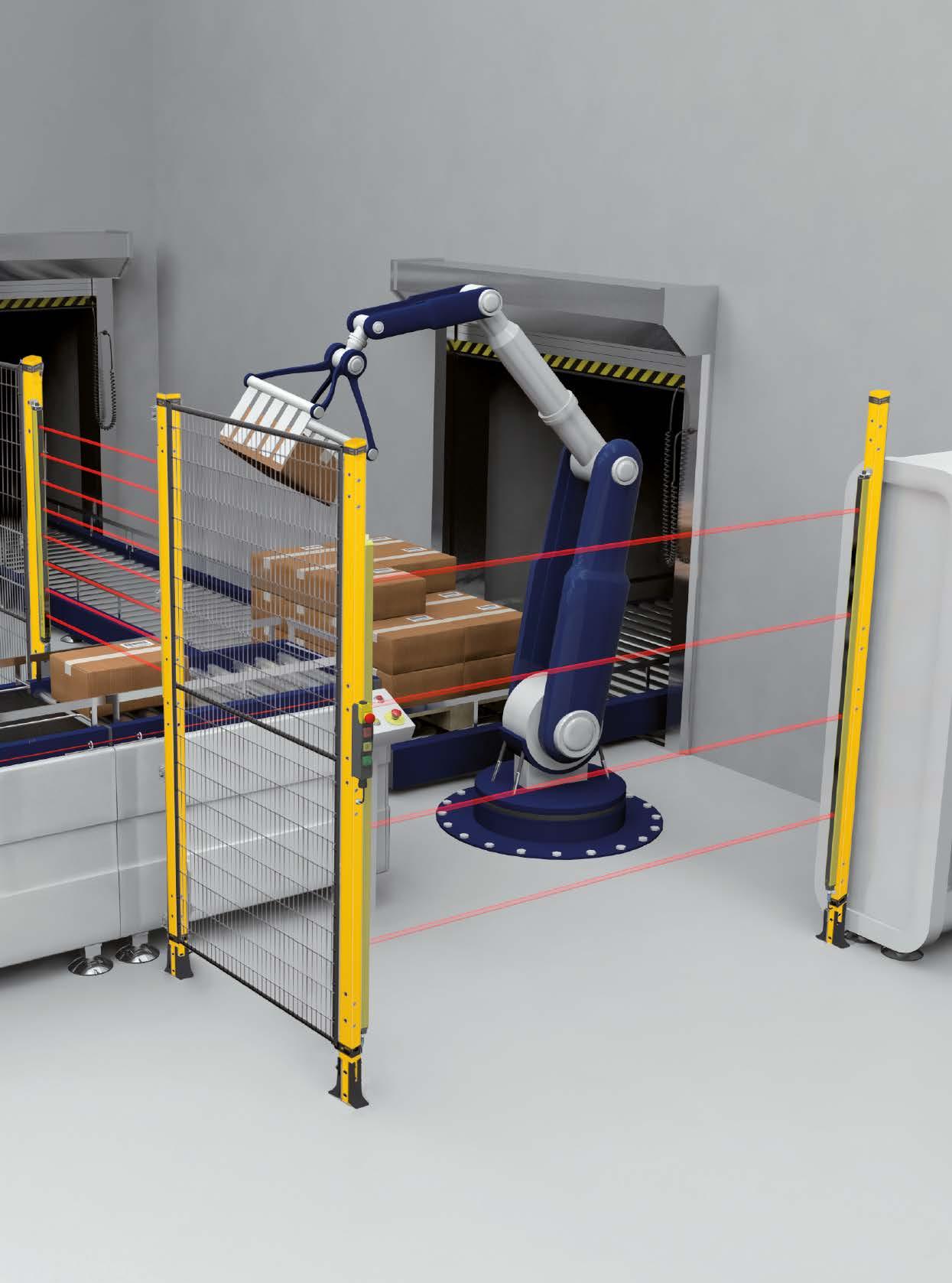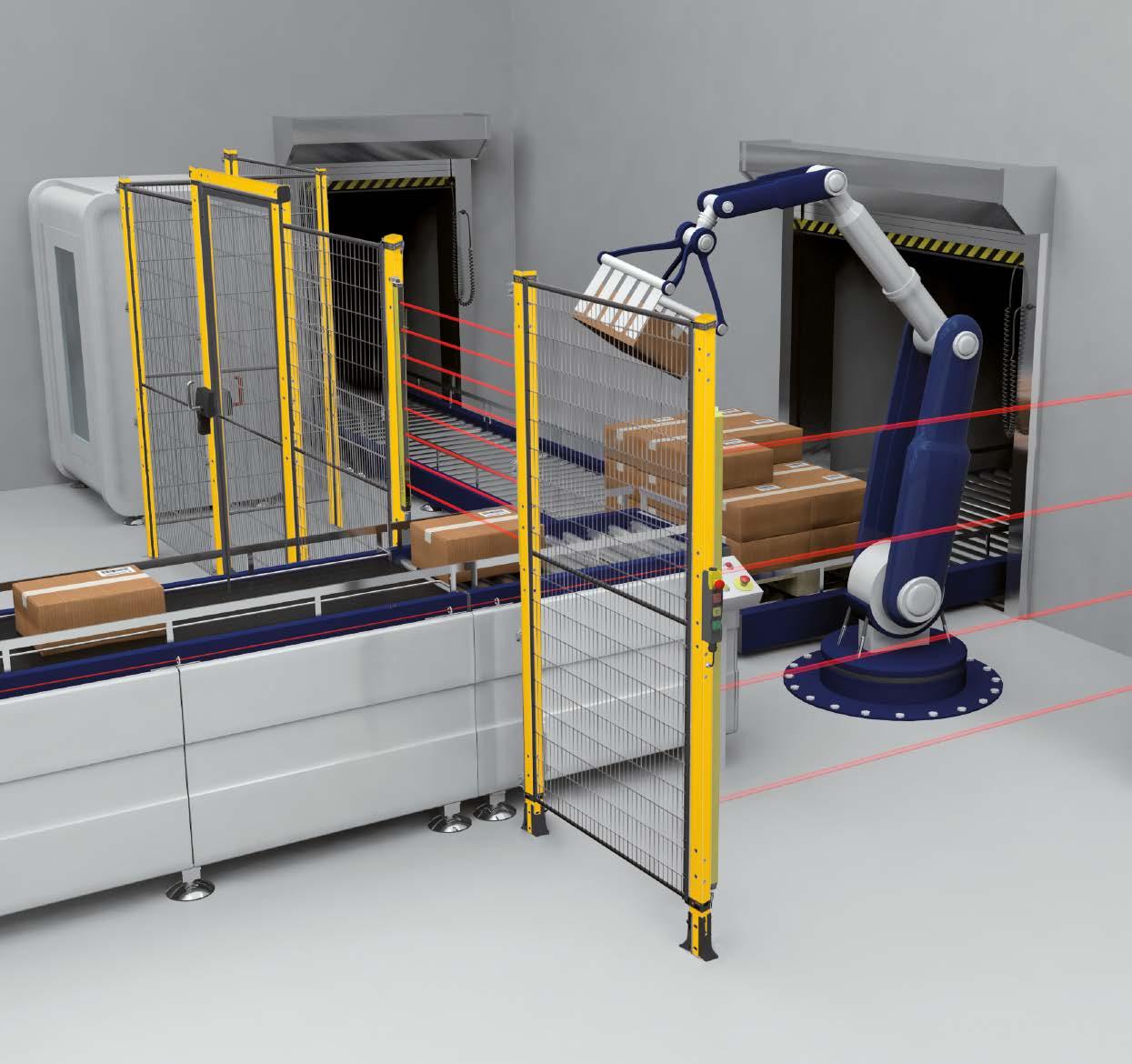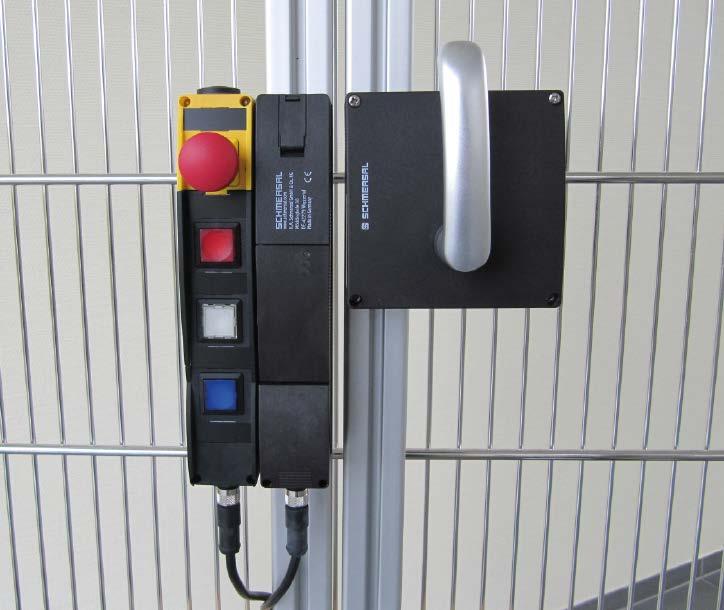
3 minute read
AUTOMATION
TECHNOLOGY
COVERSTORY
Industrial Robot Protection

Alternatives to the Safety Fence
The choice of protective equipment around a robot workstation is made easier if one keeps a close eye on the individual circumstances.
It is a familiar picture in industrial production – a robot workstation or a complete, robot-supported production line surrounded by a protective fence. Guard doors within the fencing permit access to the hazardous area for servicing and cleaning purposes. Safety switches, or more frequently, solenoid interlocks, are used to protect the guard door. This form of robot workstation protection is tried and tested and satisfies applicable directives and standards. But is it the best solution for every application? There are alternatives. Consequently, the designer – whose tasks include choosing the right protective devices – should look closely at the alternatives on a case-bycase basis.
Is a Safety Fence the Only Option?
If the only purpose of the protective device is to prevent the operator from accessing the hazardous area, opto-electronic protective devices could carry out the same function as the protective fence. Safety curtains and safety light grids ensure an unobstructed view of the process, as well as provide for greater flexibility, e.g. when feeding parts.
If the risk analysis indicates that an emergency-stop button needs to be installed in the hazardous area, a device from Schmersal’s BDF product range is recommended. The BDF 100 is easy to integrate into common enclosures and protective fence profiles.
Distinction Between Man and Material
If the designer opts for opto-electronic protective devices, he can create a distinction between man and material, thus boosting the flexibility of the production cell. This can be achieved with functions such as muting, blanking, and floating blanking: if the operator then reaches into the hazardous area, the protective devices cause the hazardous movement


If the designer opts for opto-electronic protective devices, he can create a distinction between man and material, thus boosting the flexibility and efficiency of the robot work cell.
Tobias Thiesmann, System and Solutions Manager, Schmersal Group
Easy to assemble and ergonomic: A combination of control panel and solenoid interlock on the safety door of a robot workstation
to stop immediately. On the other hand, the components being processed can be conveyed into and out of the hazardous area without the robot being stopped.
Tactile Protective Devices as an Alternative
If operators need to be present within a robot cell temporarily, the use of safety shutdown mats as a form of area protection can be useful. While the operator is standing on the mat and is therefore present in the hazardous zone the robot will be prevented from starting. When safeguarding large guard doors on robot cells and production lines, pull-wire emergency-stop switches can also carry out the same functions as an ‘all-round’ and, therefore, easily accessible emergency-stop button.
Setup Operation with Two-hand Control Panels
Specific safety regulations apply to the setup of machines and systems in view of the need to work with the guard door open (and, for example, the reduced speed of hazardous movements). When carrying out setup work, the use of a two-hand control panel may present a solution, although these were originally developed for the operation of presses and other forming technology equipment. With their assistance, safety functions designed to prevent robot operation when a guard door is open, can be bypassed in a targeted and safe manner.
Author Tobias Thiesmann,
System and Solutions Manager, Schmersal Group
Contact
K.A. Schmersal GmbH & Co. KG, Wuppertal, Germany Tel.: +49 202 647 40 · www.schmersal.com









